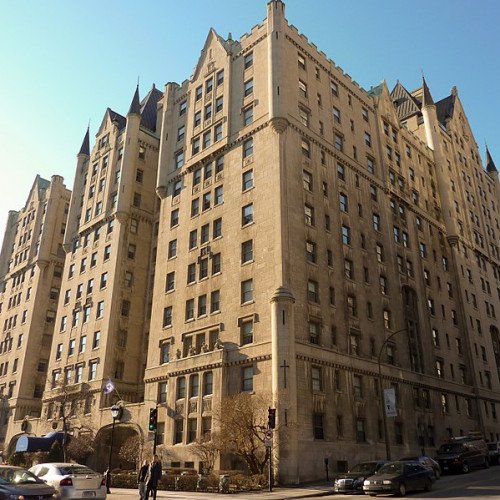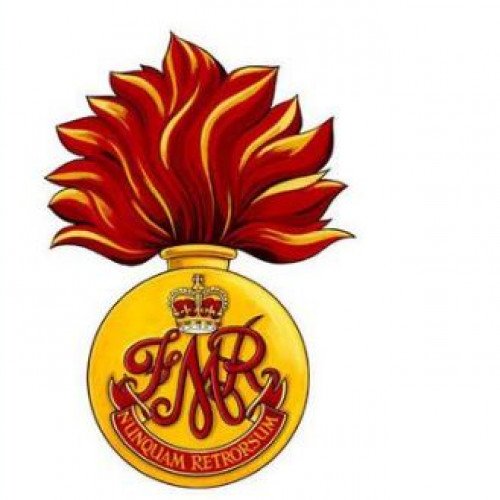Castles of "Canada" LE CHÂTEAU APARTMENTS vs LES FUSILIERS MONT-ROYAL

LE CHÂTEAU APARTMENTS
Le Château Apartments is an apartment building in Montreal, Quebec, Canada. It is located at 1321 Sherbrooke Street West in the Golden Square Mile neighbourhood of Downtown Montreal. The building was commissioned by Pamphile Réal Du Tremblay the owner of La Presse newspaper at the time. It was constructed between February 1925 and 1926, and was designed by Montreal architecture firm Ross and Macdonald. Its facade is Tyndall limestone from Manitoba and its structural material is steel. It ranges from 12 to 14 stories tall. There are 136 apartments. The building is home to many famous residents, including at one time author Mordecai Richler for more than 20 years. Le Château Apartments were designed to resemble both French châteaux and Scottish fortified houses. The roof of the building is copper, which is commonly found in Canada's grand railway hotels. The facade of the building is mostly Tyndall limestone from Garson, Manitoba, and contains fossils dating from before the last ice age when much of southern Manitoba was covered by a vast sea. Most of the architectural details are in Indiana Limestone.
Statistics for this Xoptio

LES FUSILIERS MONT-ROYAL
Les Fusiliers Mont-Royal is a Primary Reserve infantry regiment of the Canadian Army. Les Fusiliers Mont-Royal originated in Montreal, Quebec on 18 June 1869 as The Mount Royal Rifles. It was redesignated as the 65th Battalion, Mount Royal Rifles on 5 November 1869, as the 65th Regiment "Mount Royal Rifles" on 8 May 1900 as the 65th Regiment "Carabiniers Mont-Royal" on 1 August 1902, as Les Carabiniers Mont-Royal on 29 March 1920, as Les Fusiliers Mont-Royal on 15 April 1931, as the 2nd (Reserve) Battalion, Les Fusiliers Mont-Royal on 7 November 1940 and finally as Les Fusiliers Mont-Royal on 15 November 1945. Upon redesignation as Les Carabiniers Mont-Royal on 29 March 1920 it was organized as a two-battalion regiment with the 1st Battalion (perpetuating the 69th Battalion (Canadien-Français), CEF) on the Non-Permanent Active Militia order of battle, and the 2nd Battalion (perpetuating the 150th Battalion (Carabiniers Mont-Royal), CEF) on the Reserve order of battle. The reserve unit was disbanded on 14 December 1936. On 4 May 1951, Les Fusiliers Mont-Royal mobilized two temporary Active Force companies designated "E" and "F" Company. "E" Company was reduced to nil strength upon its personnel being incorporated into the 1st Canadian Infantry Battalion (later the 3rd Battalion, The Canadian Guards) for service in Germany with the North Atlantic Treaty Organization. It was disbanded on 29 July 1953. "F" Company was initially used as a reinforcement pool for "E" Company. On 15 May 1952, it was reduced to nil strength, upon its personnel being absorbed by the newly formed 2nd Canadian Infantry Battalion (later the 4th Battalion, The Canadian Guards) for service in Korea with the United Nations. "F" Company was disbanded on 29 July 1953.